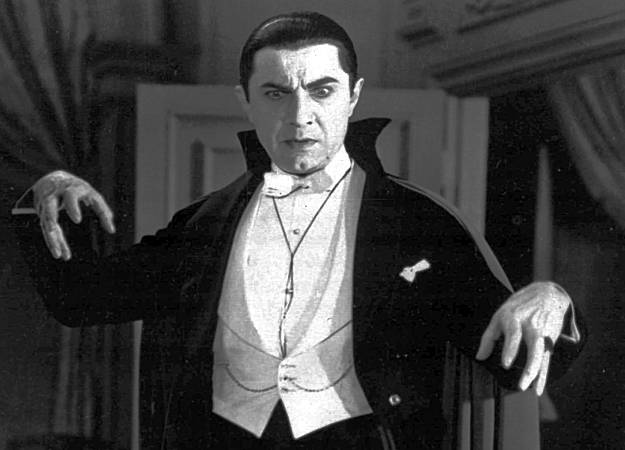The Universal Vampire Series, 2 Vols.
Vol. 1 – The Universal Vampire: Origins and Evolution of a Legend
Vol. 2 – The Hip and the Atavistic: Images of the Modern Vampire
Editors
Barbara Brodman, Nova Southeastern University
James E. Doan, Nova Southeastern University
Project Overview
For almost 200 years, since the publication of John Polidori’s The Vampyre (1819), the vampire has been a mainstay of Western culture, appearing consistently in literature, art, music (notably opera), film, television, graphic novels and popular culture in general. Even before its entrance into the realm of arts and letters in the early 19th century, the vampire was a feared creature of Eastern European folklore and legend, rising from the grave at night to consume its living loved ones and neighbors, often converting them at the same time into fellow vampires. A major question exists within vampire scholarship: to what extent is this creature a product of European cultural forms, or is the vampire indeed a universal, perhaps even archetypal figure?
In Volume I, Part 1 of the collection, Origins of a Legend: Early Mythic Images of the Vampire, we hope to shed light on this question. By tracing the development of the early Norse draugr figure into later European lore, we may see the underpinnings of Dracula who, of course, first appears as a vampire in Anglo-Irish Bram Stoker’s novel, Dracula, published in 1897. The Romantic vampire, upon which we focus in Part 2 of this volume of the collection, first coalesced around the figure of Lord Byron and his associates in the early 1800s; but what were its earlier sources? Could these have included the legendary Spanish “lady-killer,” Don Juan? And did they constitute resistance to the dominant culture of the time? As several of the essays in this collection deal with these literary connections, others will move outside Europe to explore vampire figures in Native American and Mesoamerican myth and ritual and the existence of similar or identical vampiric traditions in Asian and other non-European settings.
Volume I, Part II, A Tradition Takes Form: The Imprint of the Romantic Vampire, will focus on various aspects of the classic Dracula of Bram Stoker, including the author’s use of colonized language and colonial discourse and manifestations of the Stoker image in film, literature andlore around the world. This set of essays will also examine from various perspectives the relations between other hallmark works of 19th-century vampire literature, such as J. Sheridan Le Fanu’s Carmilla, and modern films, including Interview with the Vampire and Let the Right One In.
Volume II of the Universal Vampire Series, The Hip and the Atavistic: Images of the Modern Vampire, will be an eclectic mélange of essays, including a discussion of evolution and atavism in the vampire film, The Wisdom of Crocodiles (1998); critical pieces that examine the modern Asian vampire, on stage, in graphic novels and in film; images of the Vampire in contemporary Japan (where, according to its author, vampires should be “beautiful”); an analysis of the vampire in popular Russian culture; and the obligatory studies of vampires in The Twilight Saga and the True Blood series.
Each volume in the collection will contain 15 original, thought-provoking essays, chosen to both augment and challenge the classical vampire corpus and examine the evolutionary path the legend has taken in modern arts and letters.
Audience
The book is intended for an informed popular audience interested in the vampire legend and its manifestations in literature, film, visual arts and popular culture. Given the popularity of the vampire and the almost insane pace at which authors, artists and film makers strive to present newer and more innovative takes on the legend, we anticipate that the book will appeal to a broad readership throughout the English-speaking world. With the growing number of academic conferences that focus on the theme of the vampire, and the proliferation of courses dealing with the vampire legend in colleges and universities, we are confident that a large academic audience exists as well.
Competition
Two recent studies have endeavored to trace the development of the Vampire in literature, film and popular culture: John Edgar Browning and Caroline Joan (Kay) Picart’s Draculas, Vampires, and Other Undead Forms: Essays on Gender, Race, and Culture (Scarecrow Press, 2009) and Matthew Beresford’s From Demons to Dracula: The Creation of the Modern Vampire Myth (Reaktion Books, 2008). Both of these collections are devoted largely to the Dracula mythos, the subject as well of Elizabeth Kostova’s 2005 The Historian: A Novel (Little, Brown and Company). In our proposed collection, we plan to extend this discussion outwards from a focus primarily on Dracula to the notion that the vampire is truly universal, with the literary Count only one manifestation.
Anticipated date of completion: September 2012
About the Editors
Barbara Brodman is Professor of Humanities at Nova Southeastern University, where she teaches courses in international history and literature. With graduate degrees from the University of New Hampshire and the University of Florida in both literature and the social sciences, her research favors interdisciplinary studies of topics ranging from the Mexican cult of death to the Don Juan legend to the universal legend of the vampire.
James E. Doan is Professor of Humanities at Nova Southeastern University, where he teaches courses in literature, the arts, folklore and mythology. With an M.A. in Folklore and Mythology from U.C.L.A. and a Ph.D. in Folklore and Celtic Studies from Harvard University, he has long been interested in the relation between folklore and literature, including the development of
the vampire legend from its mythic origins to modern film and other cultural productions.
Both Brodman and Doan have published extensively in their fields of research and present fresh research regularly at conference. Their collaboration on this collection derives from a co-authored paper on the Don Juan and vampire legends, which they successfully presented at conference and to their peers in 2009.






There are no responses yet